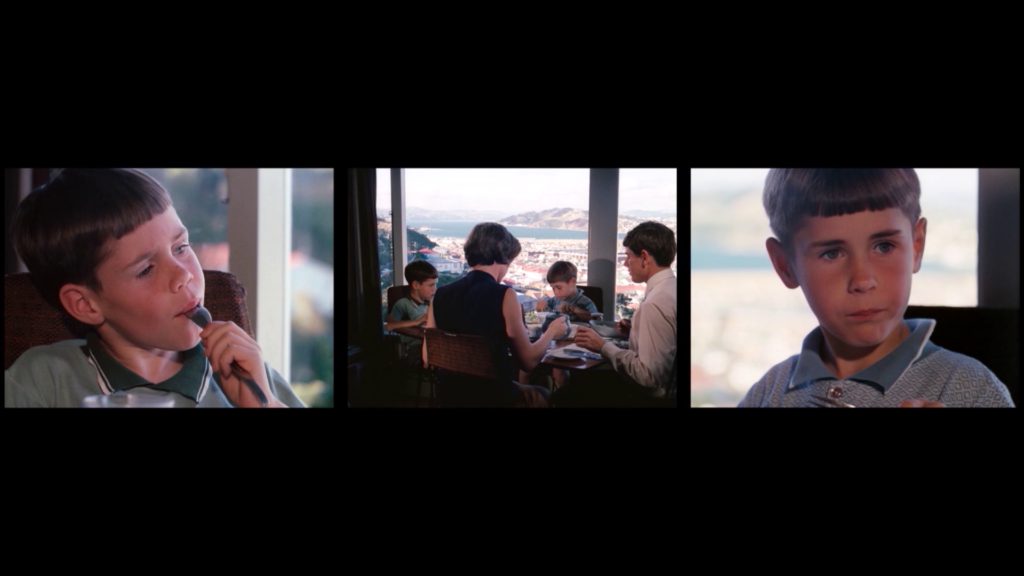A Government report frames the success of This Is New Zealand.
In the late 1960s, as Britain moved towards joining the Common Market, New Zealand realised that it could no longer think of itself as ‘Britain’s Farm’. In this moment, Expo ’70, in Osaka, offered New Zealand an unmissable opportunity to promote itself to another market. Expo’s huge, primarily Japanese audience would have dozens of spectacular pavilions to visit, so New Zealand had to make its presentation count.
The National Film Unit made the three-screen film, This Is New Zealand, specially for the New Zealand pavilion. There, it served as a backbone to the overall pavilion experience. Viewers endlessly filed into the small, red-carpeted cinema—hiding New Zealand milkshakes and lamb burgers in their jackets—to enjoy a twenty-minute montage of scenes of some distant archipelago called ‘New Zealand’. We wasted no opportunity to put our case; as visitors queued, they were treated to skits with titles like ‘Otaki Races’, ‘Songs of the Goldmining Days’, and ‘Young Country’.
A confidential report on Expo ’70 produced by the Department of Industries and Commerce in 1971 explains that This Is New Zealand ‘covered all facets of New Zealand life’ and ‘provided an introduction [to] or amplification of the other display items’. For instance, a scuttling kiwi enjoyed a cameo in the film but there was also a stuffed example on display at the Information Centre, and hundreds of thousands of kiwi pins were handed out. The bird’s popularity prompted Prime Minister Keith Holyoake to give two live kiwi to the Mayor of Osaka in the limelight of New Zealand’s National Day. The report boasts that the gesture was observed by the Emperor himself, ‘a noted biologist’, who requested a private reception with one of the birds in his nearby hotel suite.
As an enticing New Zealand image inventory, This Is New Zealand endorsed opportunities and experiences presented elsewhere in the pavilion. After seeing sheep in the film, visitors could pet real-life ‘champion sheep’ or dine on lamb in the Geyser Room restaurant. While the film’s technical prowess demonstrated the NFU’s capabilities, the cinema in which it was shown was also a ‘showcase’ for New Zealand deep-pile carpet. The pavilion integrated creative cinema, carpet, and cuisine.
Everything in the pavilion had a job to do. While John Drawbridge’s abstract mural conveyed the ‘distinctive clarity of New Zealand light’, it was strapped to a wall made of New Zealand pinus radiata that hosts had to point out to visitors as much as the mural itself.
In our current show, the film This Is New Zealand can be enjoyed as a cinematic treat, on its own terms. But for those hoards of Expo visitors, and for New Zealand at the time, it was part of a bigger whole—a calculated national propaganda push. Product placement.
—Moya Lawson, Assistant Curator
The film This Is New Zealand can be seen in our exhibition of the same name, until 15 July.


